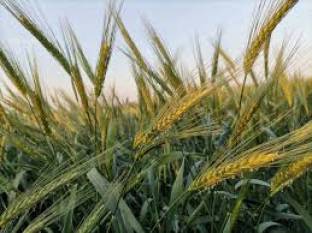NEW DELHI, 15 April 2025: India's diverse agro-climatic zones have given rise to a variety of wheat strains, each with unique characteristics and price points.
While the average wheat price in India hovers around ₹2,539 per quintal (₹25.39 per kilogram), certain premium varieties command significantly higher prices due to factors like nutritional benefits, cultivation challenges, and limited production regions.
Here's an exploration of the top 10 most expensive wheat varieties in India, their cost per kilogram, reasons for their premium pricing, and the states where they are predominantly cultivated.
1. Emmer Wheat (Khapli)
- Price: Approximately ₹200 to ₹235 per kilogram.
-
Cultivating States: Maharashtra, Karnataka, and Gujarat.
-
Why So Expensive: Emmer wheat, also known as Khapli, is an ancient grain revered for its low gluten content and high fiber, making it suitable for diabetics and health-conscious consumers. Its cultivation is labor-intensive with lower yields compared to modern wheat varieties, contributing to its higher market price.
2. Sharbati Wheat
-
Price: Ranges between ₹60 to ₹80 per kilogram.
-
Cultivating State: Madhya Pradesh.
-
Why So Expensive: Known for its soft texture and sweet taste, Sharbati wheat is considered premium quality. The grain's superior taste and texture make it highly sought after, justifying its elevated price.
3. Lokwan (Lok-1) Wheat
-
Price: Approximately ₹124 per kilogram .
-
Cultivating States: Maharashtra and Madhya Pradesh.
-
Why So Expensive: Lokwan wheat is favored for its high protein content and excellent chapati-making qualities. Its consistent quality and demand in urban markets elevate its price.
4. Durum Wheat (Malavshakti)
-
Price: Around ₹70 to ₹90 per kilogram.
-
Cultivating States: Madhya Pradesh and Rajasthan.
-
Why So Expensive: Durum wheat is primarily used for pasta and semolina products. Its hard texture and high gluten strength make it valuable for specific culinary uses, leading to higher prices.
5. Bansi Wheat
-
Price: Approximately ₹80 per kilogram.
-
Cultivating States: Maharashtra and Gujarat.
-
Why So Expensive: Bansi wheat is an indigenous variety known for its rich taste and nutritional profile. Limited cultivation and traditional farming methods contribute to its premium pricing.
6. Kalyansona Wheat
-
Price: Around ₹65 per kilogram.
-
Cultivating States: Punjab and Haryana.
-
Why So Expensive: Kalyansona is a high-yielding variety with good milling qualities. Its balanced protein content and adaptability make it a preferred choice, leading to higher market value.
7. PBW 343
-
Price: Approximately ₹60 per kilogram.
-
Cultivating States: Punjab, Haryana, and Uttar Pradesh.
-
Why So Expensive: PBW 343 is known for its disease resistance and high yield. Its grains have good chapati-making qualities, making it popular among consumers and thus priced higher.
8. HD 2967
-
Price: Around ₹58 per kilogram.
-
Cultivating States: Uttar Pradesh, Bihar, and Punjab.
-
Why So Expensive: This variety offers high yield potential and resistance to rust diseases. Its adaptability to various climatic conditions and consistent grain quality contribute to its premium pricing.
9. MACS 6222
-
Price: Approximately ₹55 per kilogram.
-
Cultivating States: Karnataka and Maharashtra.
-
Why So Expensive: Released for irrigated timely sown conditions in the Peninsular Zone, MACS 6222 is valued for its grain quality and yield, leading to higher demand and price.
10. HI 8759 (Pusa Tejas)
-
Price: Around ₹50 per kilogram.
-
Cultivating States: Madhya Pradesh and Rajasthan.
-
Why So Expensive: Known for its early maturity and high protein content, HI 8759 is preferred for its nutritional benefits and adaptability, justifying its elevated cost.
The premium pricing of these wheat varieties is influenced by factors such as nutritional value, taste, cultivation challenges, and regional demand.
Consumers seeking specific health benefits or culinary qualities are often willing to pay a higher price for these specialized grains.
As the demand for diverse and health-oriented food options grows, these premium wheat varieties continue to hold significant value in India's agricultural and economic landscape.
Image credit: springernature.com























